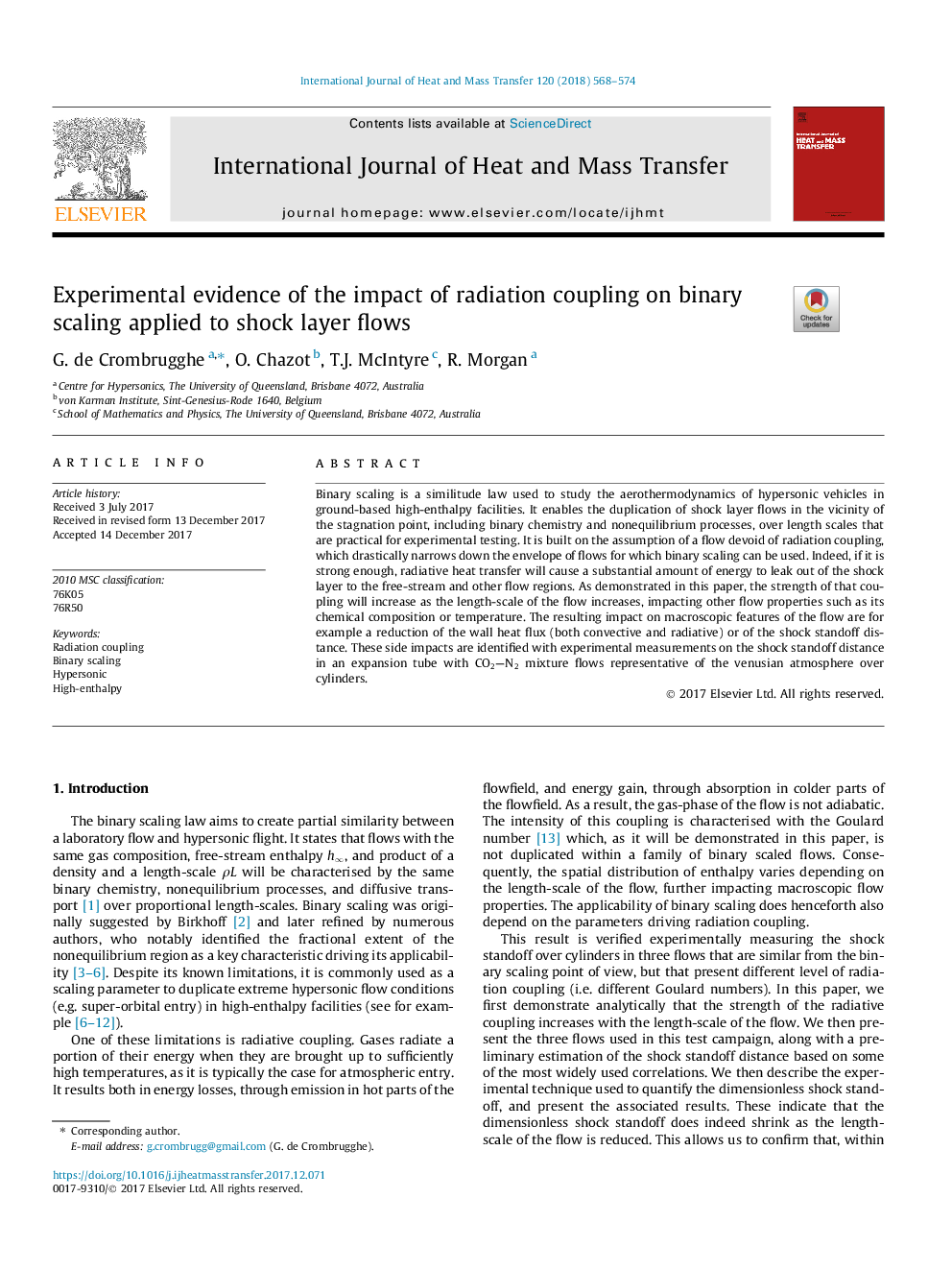| Article ID | Journal | Published Year | Pages | File Type |
|---|---|---|---|---|
| 7054609 | International Journal of Heat and Mass Transfer | 2018 | 7 Pages |
Abstract
Binary scaling is a similitude law used to study the aerothermodynamics of hypersonic vehicles in ground-based high-enthalpy facilities. It enables the duplication of shock layer flows in the vicinity of the stagnation point, including binary chemistry and nonequilibrium processes, over length scales that are practical for experimental testing. It is built on the assumption of a flow devoid of radiation coupling, which drastically narrows down the envelope of flows for which binary scaling can be used. Indeed, if it is strong enough, radiative heat transfer will cause a substantial amount of energy to leak out of the shock layer to the free-stream and other flow regions. As demonstrated in this paper, the strength of that coupling will increase as the length-scale of the flow increases, impacting other flow properties such as its chemical composition or temperature. The resulting impact on macroscopic features of the flow are for example a reduction of the wall heat flux (both convective and radiative) or of the shock standoff distance. These side impacts are identified with experimental measurements on the shock standoff distance in an expansion tube with CO2-N2 mixture flows representative of the venusian atmosphere over cylinders.
Keywords
Related Topics
Physical Sciences and Engineering
Chemical Engineering
Fluid Flow and Transfer Processes
Authors
G. de Crombrugghe, O. Chazot, T.J. McIntyre, R. Morgan,
